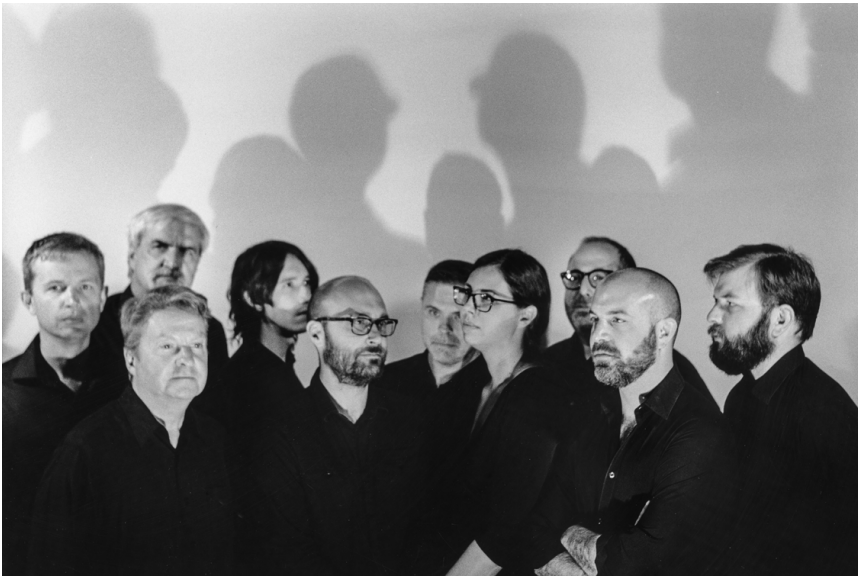by Kevin McLaughlin

If there was anything to complain about, it was the loud air fan in the gallery ceiling that just…never…stopped. The lasting impression of this No Exit concert, however, was of interesting new works played by musicians who really knew what they were doing.
The solo bass clarinet work, Evan Ziporyn’s Partial Truths, had a committed advocate in Gunnar Owen Hirthe. The performer managed to dispel any doubt (if there was any) about the legitimacy of his instrument in a solo role, maintaining the continuity of this work all throughout its seventeen minutes (though if it were up to me, I’d lop off about six minutes). Partial Truths is full of implied and literal polyphony — the title alludes to the idea of multiphonics, which occur frequently in the work. Singing while playing is not an easy technique to accomplish on bass clarinet, but the beauty of the lines that Hirthe achieved — not the struggle — was what came through.
Other highlights were the two string duos — Kaija Saariaho’s Aure and Penderecki’s Duo Concertante. Saariaho’s music was characterized by the performers as “spectral.” There was some of that — the abstract colors and tonal combinations were worth beholding — but it was a different kind of specter that came to mind in this performance. Violinist Cara Tweed and cellist Nick Diodore conjured eerie sul ponticello flutters, shifting rhythms, and pale apparitions, sometimes recalling the sounds of the ghostly ondes Martenot.
Penderecki’s Duo Concertante for violin and double bass (played on cello at this concert) was a more passionate affair — red-blooded and aggressive where the Saariaho was ethereal. Written in 2010 at the request of violinist Anne-Sophie Mutter, the six-minute work created an expansive sound world in a brief interval of time. Tweed and Diodore were excellent partners, overcoming technical obstacles in their individual parts while keeping ever mindful of their chamber music responsibilities.
Four movements of Elliot Cole’s Postludes for bowed (and occasionally thumped) vibraphone were played in two sets — II & IV on the first half, then VII & VIII after intermission. The idea of bowing a vibraphone is not uncommon in contemporary music, but, as the composer points out, “it always appears as a special effect, an exotic color.” It was fascinating, therefore, to see No Exit’s four players take their places, bows in hand, around one instrument, choreographing their movements beautifully and precisely — and, I’m happy to report, without once stabbing each other. The sustained, sometimes overlapping pure intervals enveloped the hall with mesmerizing, meditative beauty.
Tweed and Diodore brought intensity and insight to Alfred Schnittke’s moody Stille Musik. The duo made clear the progression from the low and mortuary chromatic double-stops at the start, toward the heavenly deliverance of stratospheric harmonics and overtones by the work’s end.
Hirthe returned for Three Scenes for Solo Clarinet by Israeli-American composer Shulamit Ran. Hirthe is a charismatic performer who held nothing back in these three short but extremely dramatic works. Bold and clean articulation helped command the attention of the room in the first movement, ferocity and grace elevated the second, and a profound solemnity distinguished the third.
Luke Rinderknecht, No Exit’s excellent percussionist, wrote and performed the final work, Resonances for marimba and gong resonance. Organized around a melodic row of only a handful of notes and played gracefully with four mallets by Rinderknecht, the piece made for captivating listening, and watching.
Published on ClevelandClassical.com May 17, 2023.
Click here for a printable copy of this article



